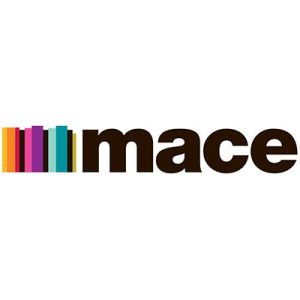We have a deep knowledge of the construction industry, delivering awe inspiring construction videos and stunning construction photography. We will work with you to get the most from your budget.
Planning your construction video
Appointing a video contact
It is a good idea that someone from within the company manages the project internally. They have ‘insider’ knowledge of the business including the people, the locations, the products and services etc Invaluable when organising and scheduling a construction video production. We can then liaise with that person to ensure everything is in place for a successful video shoot.
Recce
Ideally we ‘recce’ the site to assess the shooting environment and meet any key personnel involved. This visit enables us to assess the filming conditions and identify problems that may arise and solve them prior to the shoot dates. It is also an opportunity for the site team to ask us any questions about the filming. With the shot list in mind, we ‘scout’ for suitable locations and check availability of staff, locations and resources. If possible, it makes sense for us to undertake any induction procedures whilst we are on site. This will save time on the filming day.
We will also ask about RAMS so we can submit the correct documents for approval as soon as possible ahead of filming.
How to prepare ahead of the filming
We will help you create a detailed schedule illustrating where, when and for how long we are filming. Distribute this to ALL staff on site so they know what to expect. Even those not involved in the filming need to now so they can be mindful of our presence.
Carefully choose interviewees. They should be able to talk confidently, enthusiastically and eloquently to camera and be able to deliver the key points concisely and succinctly. They should be prepared and have rehearsed their lines before they are interviewed. If someone is less confident, we do offer an autocue set-up which will help them deliver their script accurately and more easily.
Ideally the interviews should be filmed in a quiet location. Avoid scheduling these sessions during noisy periods or near noisy locations.
How to prepare the location for filming
In the days leading up to the filming remind staff that it is happening. On the filming day display some signage asking for quiet and awareness.
Locations that are being used must be the best representation of your business in terms of appearance e.g. tidy up and rectify any potential H&S issues
Make sure the staff are fully prepared before the crew arrive. Equipment should be set-up, make sure staff are fully briefed and wearing the correct PPE, which is clean and features the latest company branding.
Important filming requirements
To make the shoot day go as smoothly as possible we suggest:
Provide the crew with a secure base to store their equipment. On arrival we can load all our gear into this room and then get set-up from there. We can then return here throughout the day to get more gear, charge batteries or have break.
If possible please arrange parking as near as possible. We do have a lot of heavy equipment.
Safety
We have our own PPE but we will always check to see what PPE is mandatory on the project. We will have the required ID and relevant safety cards with us.
Planning your Construction Video: A Comprehensive Guide
Video production is a complex and creative process that involves careful planning, coordination, and execution. Whether you’re creating a short film, a promotional video, a documentary, or any other type of video content, a well-thought-out plan is essential for a successful outcome. In this comprehensive guide, we will walk you through the key steps involved in planning a video production.
1. Define Your Purpose and Goals:
The first step in planning any video production is defining the purpose and goals of your project. What message do you want to convey? Who is your target audience? What do you want the viewers to feel or do after watching the video? Answering these questions will guide the entire production process.
2. Develop a Concept:
Once you have a clear understanding of your purpose and goals, brainstorm and develop a creative concept for your video. This concept will serve as the foundation for your script, visuals, and overall style. Consider the tone, style, and theme that align with your message.
3. Create a Script:
A well-written script is crucial for a successful video. Outline the scenes, dialogues, and actions that will take place. Pay attention to the flow of the story and ensure that it effectively communicates your message. If your video involves interviews, create a list of questions to ask the participants.
4. Plan Your Shots:
Based on your script, create a shot list and storyboard. A shot list is a detailed document that outlines each scene’s shots, camera angles, movements, and props required. A storyboard is a visual representation of your script, showcasing how each shot will be framed. Planning your shots in advance helps save time and resources during the production phase.
5. Assemble Your Team:
Gather a team of skilled professionals, well that’s us :) and actors or presenters if necessary. Collaborate with a team who understand your vision and can contribute their expertise to enhance the overall quality of the video.
6. Scout Locations and Secure Permits:
If your video requires specific locations, scout potential places and obtain the necessary permits and permissions for filming. Ensure that the chosen locations align with your concept and are visually appealing. Plan for any logistical challenges, such as access to electricity or parking space for equipment.
7. Arrange Equipment and Resources:
Determine the camera equipment, lighting gear, microphones, and other resources needed for your production. Rent or purchase the necessary equipment and ensure that it is in proper working condition. Additionally, arrange for props, costumes, and makeup artists if required.
8. Plan the Production Schedule:
Create a detailed production schedule that outlines the timeline for each phase of the production process, from pre-production to post-production. Allocate specific time slots for rehearsals, setup, filming, and editing. Factor in breaks to keep the team refreshed and focused.
9. Prepare for Post-Production:
Consider the post-production aspects of your video, such as editing, sound design, visual effects, and color grading. Identify the software and tools you’ll use for editing and ensure that your editing team is proficient in their use. Plan the workflow for editing, reviewing drafts, and making revisions.
10. Budgeting and Resource Management:
Create a detailed budget that covers all aspects of your video production, including equipment, personnel, locations, permits, props, post-production, and marketing (if applicable). Keep track of expenses to stay within the budget and efficiently manage your resources.
11. Communicate and Coordinate:
Effective communication is vital throughout the production process. Schedule regular meetings with your team to discuss progress, address challenges, and make decisions collectively. Ensure that everyone is on the same page regarding the project’s vision, goals, and deadlines.
12. Rehearse and Refine:
Before the actual filming, conduct rehearsals with actors and crew members. Use this time to fine-tune performances, test camera angles, and resolve any issues that may arise. Rehearsing helps streamline the filming process and ensures a smoother production day.
13. Film with Precision and Creativity:
During the filming stage, follow the prepared shot list and storyboard while allowing room for creativity and improvisation. Pay attention to details such as framing, lighting, sound quality, and actors’ performances. Stay open to unexpected opportunities that could enhance the visual appeal of your video.
14. Review and Revise:
After filming is complete, review the raw footage to ensure that all necessary shots have been captured. Make notes of any additional scenes or retakes required. Collaborate closely with the editing team, providing feedback and guidance as they transform the raw footage into a polished video.
15. Promote Your Video:
Once the final video is ready, develop a marketing and distribution strategy to reach your target audience. Utilise social media platforms, video hosting websites, and other online channels to promote your video. Engage with viewers, gather feedback, and analyze the video’s performance to inform future projects.
In conclusion, planning a video production involves a combination of creativity, organisation, and effective communication. By following these steps and staying adaptable to unforeseen challenges, you can increase the likelihood of creating a compelling and visually impressive video that resonates with your audience. Remember that each video production is a unique creative endeavour, so embrace the process and enjoy the journey of bringing your vision to life on screen.
Please have a look at work:







